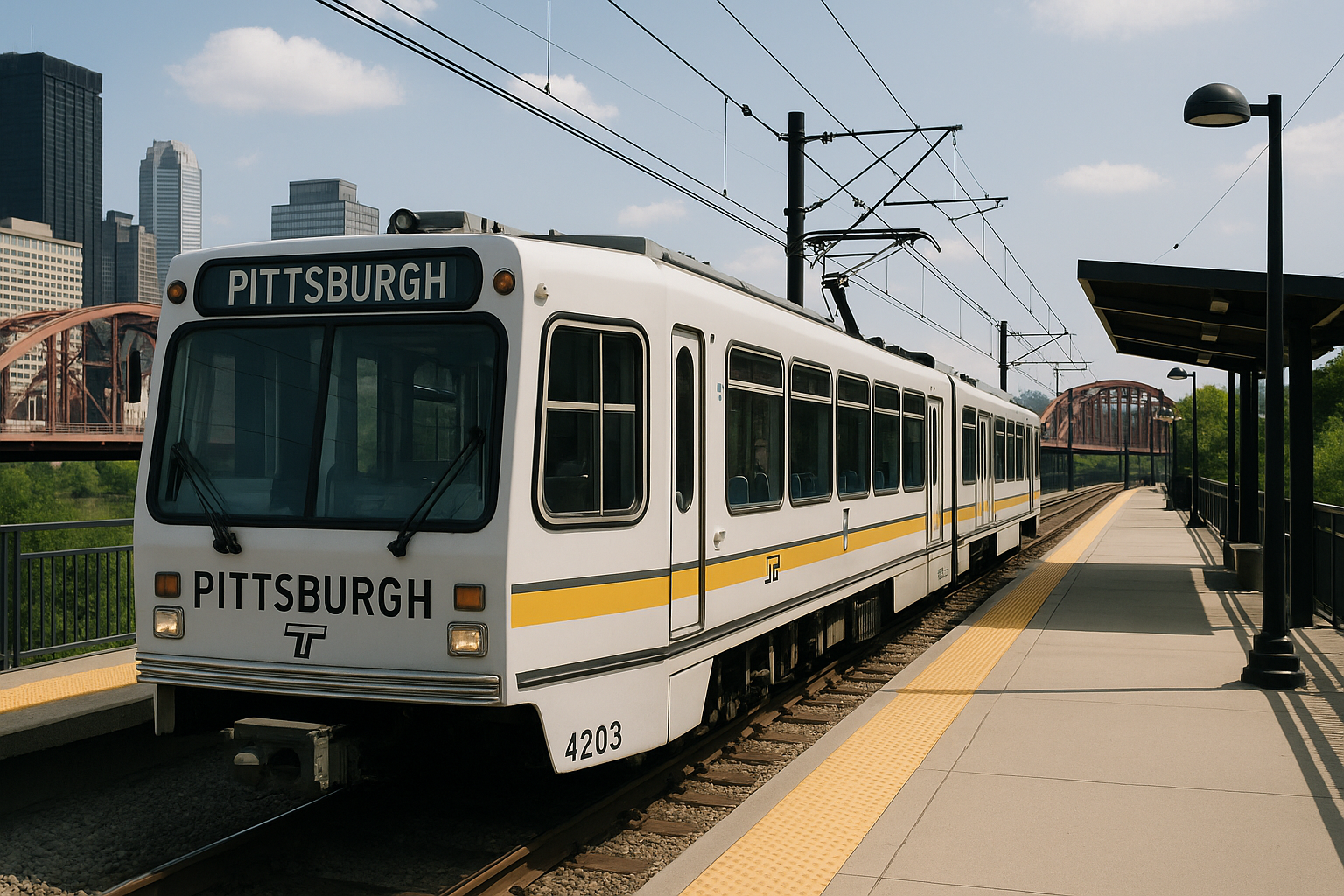Pittsburgh Light Rail, "The T"
Published: July 3, 2025
By: Adam Burns
The Pittsburgh Light Rail system, known colloquially as "The T," is an essential component of the public transit infrastructure in Pittsburgh, Pennsylvania. As the second-largest city in Pennsylvania, Pittsburgh relies heavily on efficient and reliable public transportation to connect its neighborhoods and suburbs.
The T serves residents, commuters, and tourists alike, ensuring that Pittsburgh remains accessible and navigable. This article delves into the history, operations, and future of the Pittsburgh Light Rail system, detailing its significance in the daily lives of Pittsburgh's residents.
Historical Context and Development
The origins of Pittsburgh's Light Rail system can be traced back to the early 20th century when electric streetcars were a dominant mode of urban transportation. The Pennsylvania, devoted to urban mobility, quickly became a leader in streetcar use, boasting one of the most extensive networks in the United States by the 1920s. However, as the automobile became more prevalent, the demand for streetcars waned, leading to the dismantling of many such systems across the country.
Despite the decline, Pittsburgh resisted the total removal of its streetcar lines. The Port Authority of Allegheny County (PAAC), established in 1964, took over the city's public transit operations, opting to modernize rather than eliminate the system. This decision was pivotal, as it laid the groundwork for the transformation from a streetcar system to a Light Rail Transit (LRT) system. By the 1980s, the network was undergoing significant upgrades, with the introduction of modern vehicles and the refurbishing of classic lines, culminating in the launch of the new Light Rail system in 1984.
Current Operations and Infrastructure
The Pittsburgh Light Rail system boasts two primary lines: the Red Line and the Blue Line, each serving multiple neighborhoods, suburbs, and key city locations. The lines converge in Downtown Pittsburgh, which serves as the system's central hub. Here’s a detailed overview of these lines:
Red Line (Castle Shannon to Allegheny)
This line is the workhorse of The T. It serves the southern sections of Pittsburgh, connecting various communities to the downtown area. It travels through the iconic Mt. Washington Transit Tunnel and offers important stops at Station Square— a popular shopping and entertainment area—and the bustling North Shore, which houses Heinz Field and PNC Park.
Blue Line (South Hills Village to Allegheny)
Starting from South Hills Village—a major shopping center—the Blue Line shares several routes and stops with the Red Line but diverges to serve more areas in the South Hills communities.
Operations on both lines are frequent, with trains departing every 12-15 minutes during peak hours and slightly less frequently in off-peak periods. A hallmark of The T is its efficiency and reliability, making it a preferred choice for daily commuters. The system is particularly popular among residents in the southern and southwestern suburbs of Pittsburgh.
Accessibility and Amenities
One of the most significant achievements of the Pittsburgh Light Rail system is its commitment to accessibility. The Port Authority ensures that all stations accommodate passengers with disabilities, featuring elevators, ramps, and other necessary amenities. The newer low-floor light rail vehicles further enhance accessibility by eliminating the need for steps, thereby smoothing the boarding process for wheelchair users and individuals with strollers.
Furthermore, the Light Rail system is incorporated into the broader public transit network managed by the Port Authority, which includes bus services. This integration allows riders to seamlessly transfer between different modes of transportation, thus broadening the accessibility of the city’s public transit system.
Economic and Environmental Impact
The Light Rail plays a crucial role in Pittsburgh's economic landscape. By facilitating easy commutes between residential areas and business districts, it supports workforce mobility and local economies. Key areas of employment, such as the downtown business district and the technological hub at North Shore, are well-served by The T, attracting talent from across the region.
Moreover, The T significantly reduces the environmental footprint associated with transportation in Pittsburgh. By offering a viable alternative to car travel, it lowers the city's overall emissions and helps mitigate traffic congestion, particularly during peak hours. The environmental benefits contribute to Pittsburgh's broader sustainability goals, aligning with global efforts to tackle climate change.
Challenges and Future Developments
Like any public transportation system, the Pittsburgh Light Rail has faced its share of challenges. Maintenance and operational costs continue to present financial hurdles, magnified by fluctuating ridership numbers, particularly during the COVID-19 pandemic. In response to these challenges, the Port Authority has actively pursued funding opportunities, engaging in partnerships with state and federal agencies to ensure continued operation and expansion of the service.
Looking ahead, several initiatives are in place to enhance the Light Rail system and meet future demands. Key projects include station upgrades, infrastructure modernization, and potential route extensions to serve underserved areas of Pittsburgh. These plans also integrate advanced technologies such as real-time tracking, mobile ticketing, and contactless payment systems to enhance user experience.
Contribution to Pittsburgh's Urban Identity
Beyond its practical function, The T is an integral part of Pittsburgh's urban identity. It represents a blend of historical preservation and modern innovation, reflecting the city's industrial roots and its transition into a center for technology and education. The sight of the light rail vehicles traversing Pittsburgh has become iconic, offering residents and visitors alike a scenic journey, especially through the stunning Mt. Washington Tunnel, which offers picturesque views of the skyline and three rivers converging.
Conclusion
The Pittsburgh Light Rail system is much more than a means of transport— it is a lifeline that connects the cultural, economic, and social fabric of the city. As Pittsburgh continues to evolve, so too will its light rail system, paving the way for a more connected and sustainable urban environment. Understanding and appreciating this system offers insight into Pittsburgh's past and its trajectory for the future. The T stands not only as a testament to ingenuity and resilience but also as a promise of progress and inclusivity, emblematic of Pittsburgh’s enduring spirit.

